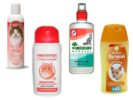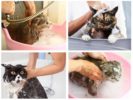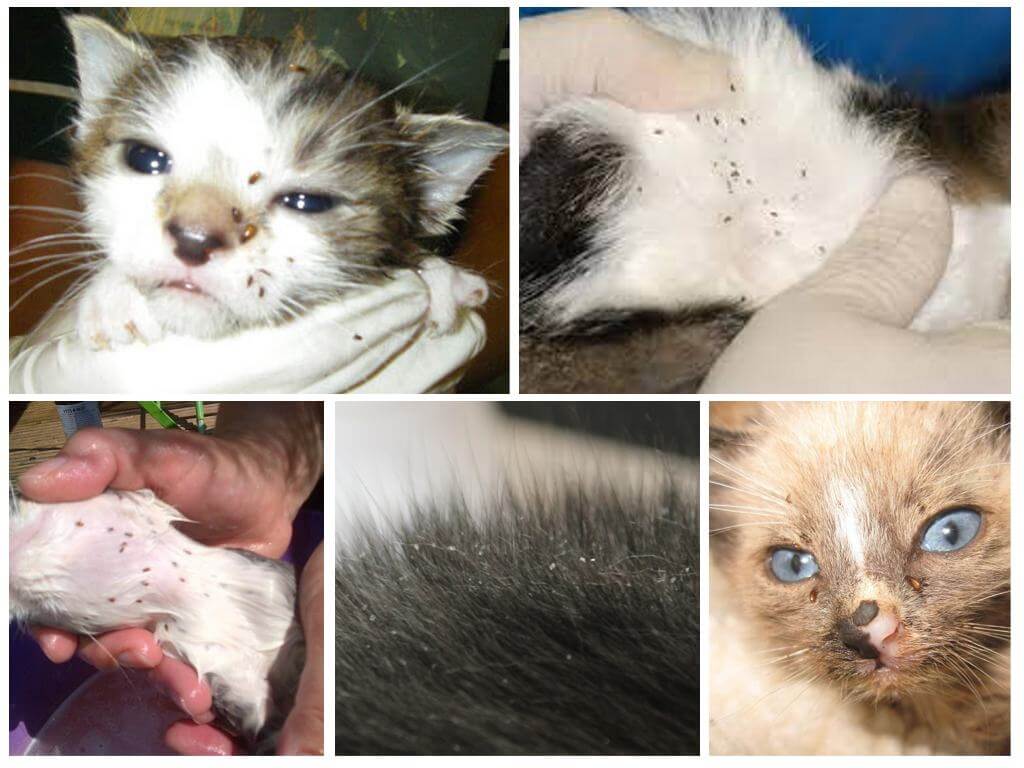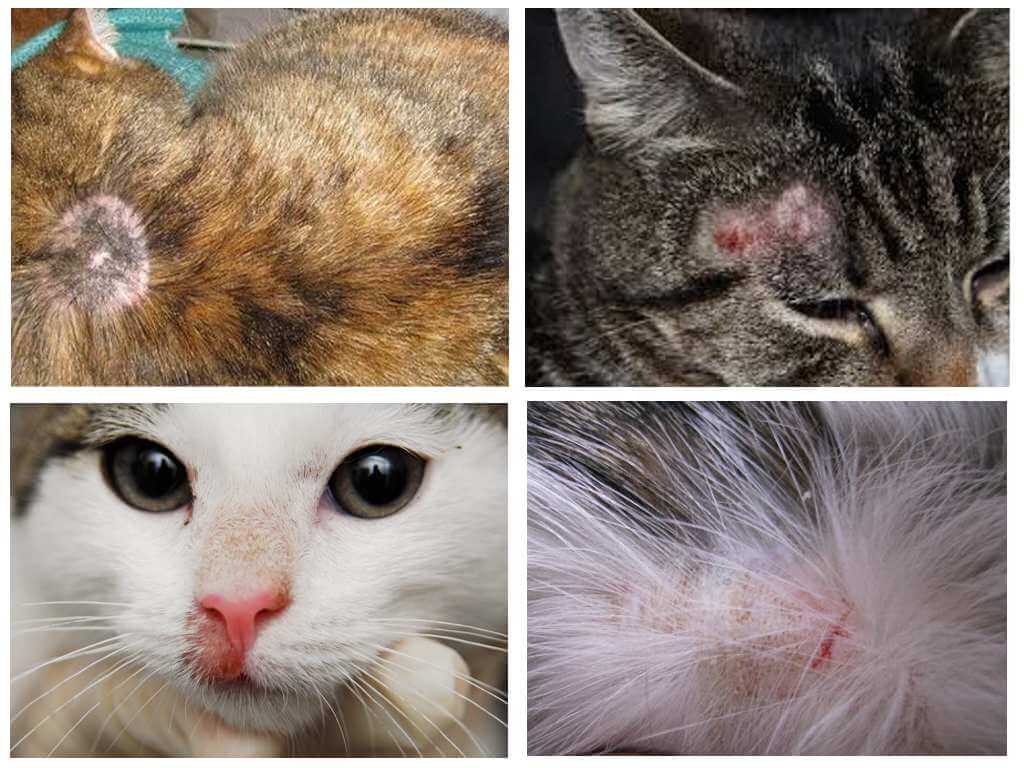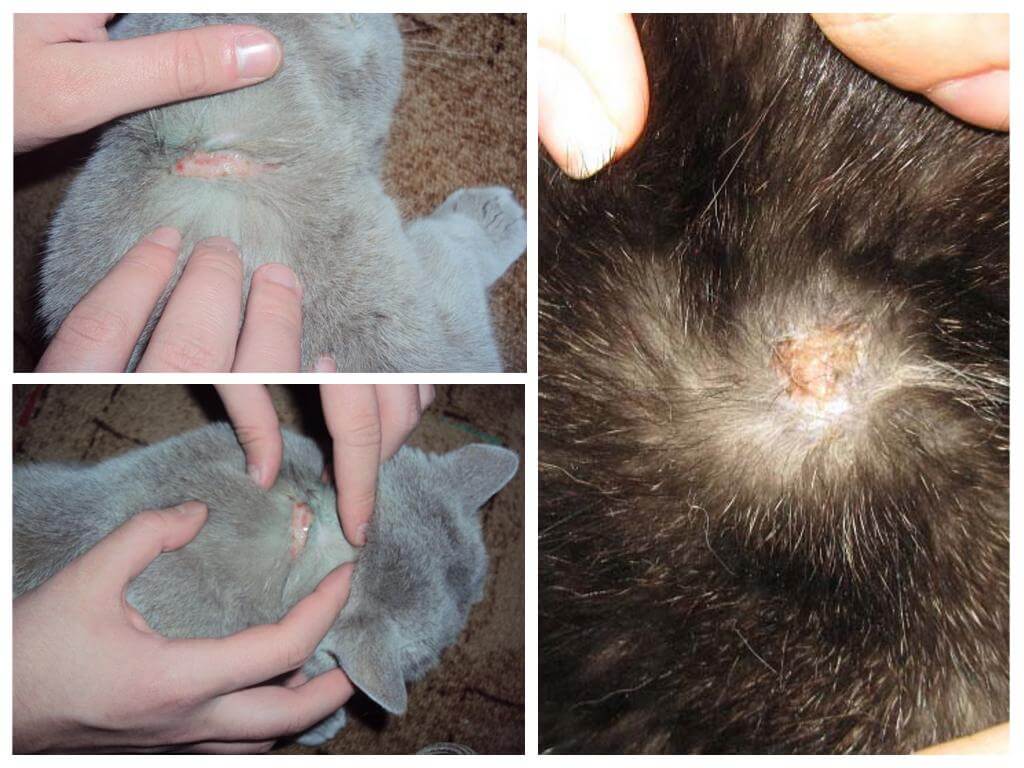- Flea Shampoos
- Flea Shampoos
- Shampoo cat
When a small kitten appears in the house, the first question becomes, and does he have fleas? This is especially true of kittens brought from the street, which can have a myriad of these "inhabitants". It is necessary to immediately wash the cat with flea shampoo, otherwise they will sprinkle throughout the apartment.
How to handle a cat?
Nature created the cat breed in such a way that they themselves try to maintain their cleanliness by constantly licking their hair and maintaining personal hygiene. However, there are many situations where it is extremely necessary to bathe an adult cat or a small kitten. One of these problems is the presence of a large number of fleas in an animal brought home.
For animals created a large number chemicals, allowing to destroy fleas, but most of them are very highly toxic drugs, and for a small kitten are very harmful to health and life. Therefore, the best way to get rid of fleas is to bathe a kitten with a special anti-flea shampoocontaining insecticides.
Such chemicals (permethrin, etofenprox, phenotrin, etc.) are designed specifically to combat parasites and harmful insects.
Insecticidal Shampoos
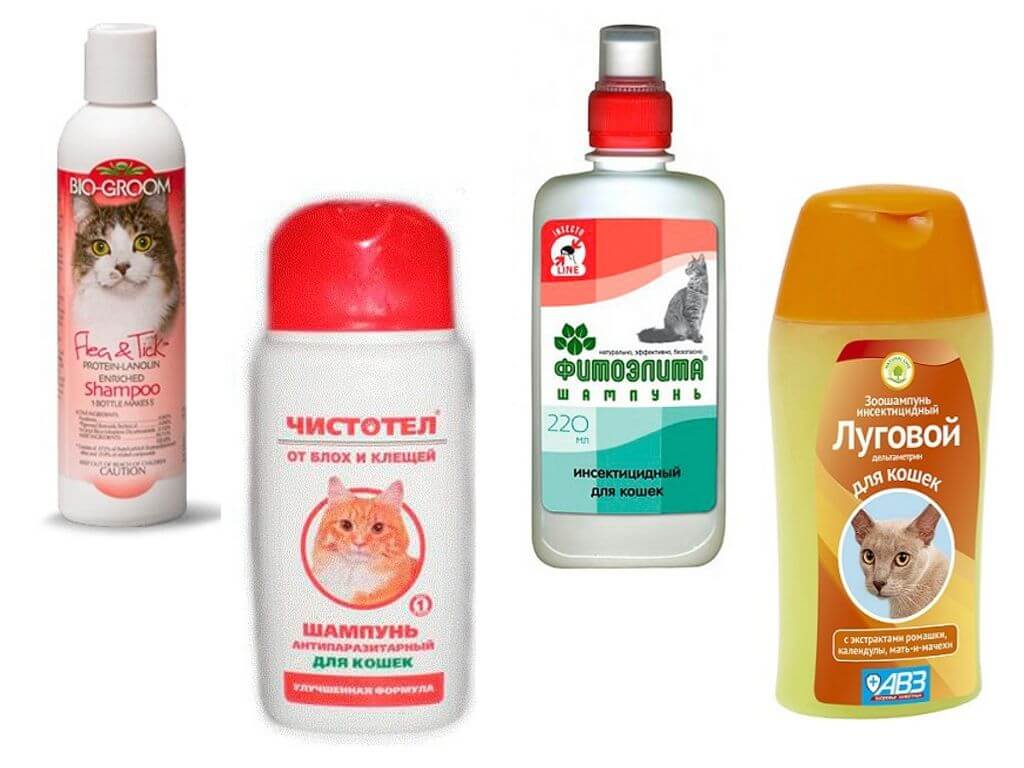
When buying flea shampoo in a store, you need to carefully read the label, production dates and warranties of this chemical. Also, instructions are always added to them, telling in detail about its composition and principles of action, for cats of what age it can be used.
Bathing kittens with flea shampoo can only be special, designed specifically for cat babies, because in high concentrations, chemicals can have a harmful effect. Well established Lugovoi, Leopard and other shampoos.
In addition to the main elements, various oils, plant extracts and minerals are also added to the shampoo, which contribute to the improvement of the structure of cat's hair and its luster, beneficial effects on the skin.
Insecticidal shampoos have varying degrees of exposure to parasites depending on the age and weight of the cat.
When asked how often you can wash your cat with flea shampoo, you can answer this way: "depending on the situation." Often, washing and processing an animal is possible only if there are a large number of fleas in the coat. It is also necessary to consult the instructions of the purchased product, which indicates the minimum period of re-processing.
How to bathe a cat or kitten
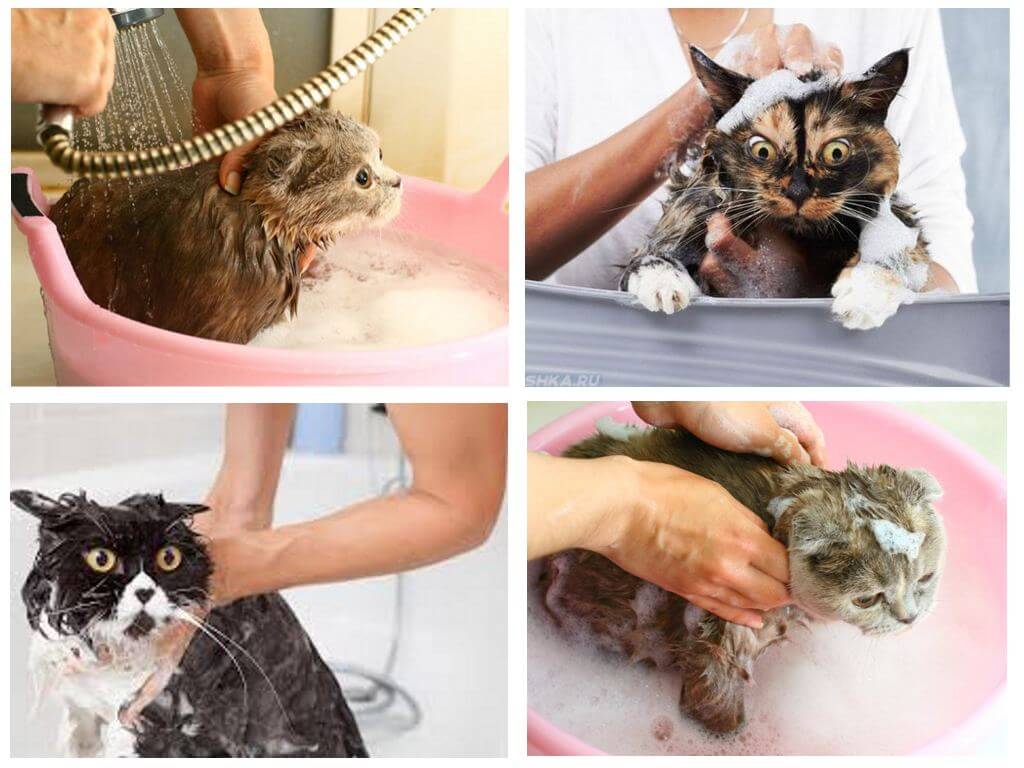
Before starting this procedure, you need to consider that both small kittens and adult cats are often afraid of water procedures, and bathing is a lot of stress for them (although there are exceptions when they love to squish in the water and even jump into the wash basin for themselves).
How to wash a kitten with flea shampoo - sequence of actions:
- To prepare: a small bowl and a bottle of shampoo;
- Water should be warm (in no case hot);
- Put the baby in the basin, holding with one hand (so as not to run away) and thoroughly moisten the fur;
Important!
During washing, do not allow water and anthelmintic shampoo to get into the ears or eyes of the cat so that there is no irritation.
- To begin, squeeze a little funds on the hand and grind, soap the animal, then carefully disperse the shampoo through the fur and foam the product;
- In accordance with the time specified in the attached instructions (usually 5-10 minutes), hold the soapy kitten for the required number of minutes, better talk to him and soothe (some at that time howl, bite and scratch);
- After a certain time, the wool should be rinsed, washed thoroughly, wipe the face with a wet hand;
- Squeeze the wool with your hands, smoothing and pressing it, then wrap the baby in a towel.
Feedback
My daughter and I found in the courtyard a small and very flea beautiful beauty cat, and brought it home. The first item on the agenda was the removal of fleas. They bought an inexpensive special shampoo and arranged water procedures that evening. There were a lot of cries and fleas too, then combed out by dozens. After a week, the treatment was repeated, because there were still a few unkilled individuals. And now we have a clean and well-groomed fluffy beauty that our daughter loves.
Valeria, Petersburg
How often can I wash?

To understand if shampoo has worked and whether re-treatment is needed, if fleas remain, wool should be carefully inspected for 1-3 days. If dead fleas come across, then it is better to comb them carefully and throw them away.
You also need to do an inspection of the animal for:
- An allergic reaction to a chemical agent (usually manifested by skin rashes);
- Presence of surviving fleas;
- How well the processing was done.
Based on the results, you need to make a decision whether to re-bathe the kitten with flea shampoo, or whether the anti-flea shampoo needs to be changed and try another. Manufacturers usually indicate the bottle, after how many days you can repeat the treatment - most often it is 10 days.
If a certain number of fleas still survive, then the treatment is best repeated.
Important!
If rashes appeared on the kitten’s skin after bathing, this means that the components of the shampoo caused an allergic reaction, and in the future this product should not be used.
Processing adult cats and cats
Adult cats and cats also often get fleas, especially in the summer. To wash a cat with flea shampoo, depending on the situation:
- The cat forgets to lick himself in some places (booty, ears, tail);
- A cat or cat regularly goes outside, so they get dirty and bring new flea-dwellers;
- Even clean (not facing the street) domestic cats can get fleas that enter the apartment from basements, stairs, and shoes of people who come.
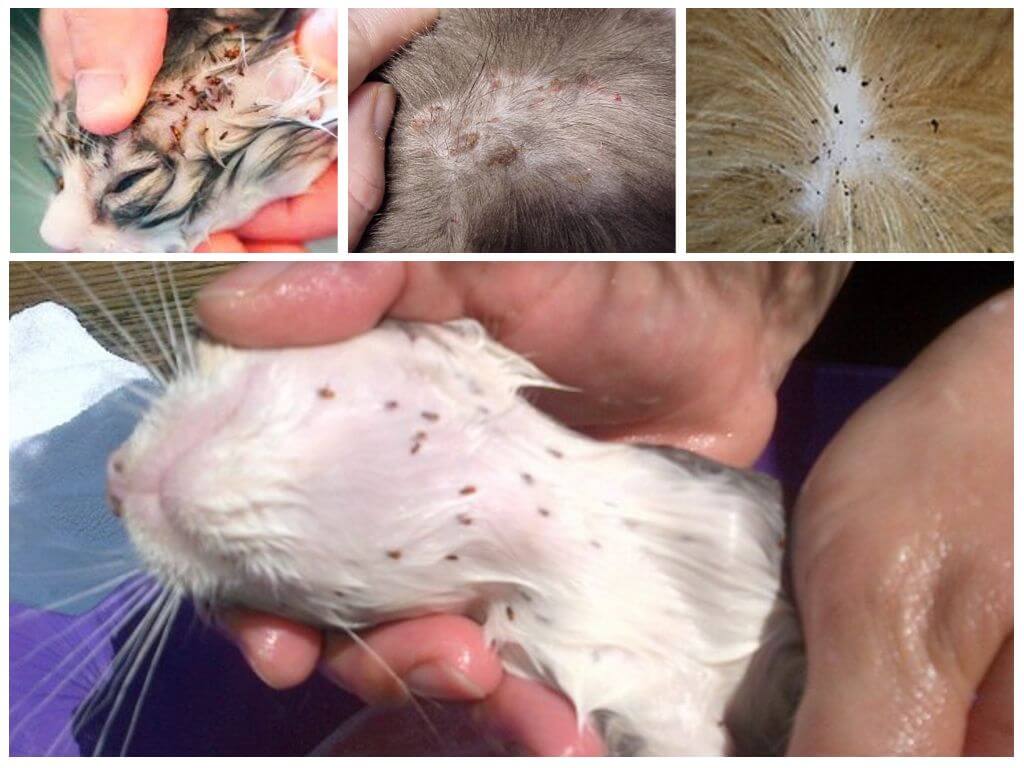
When a cat or cat brought fleas to their house, they should be washed with a special agent as soon as possible. To wash a cat from fleas follows a method similar to water procedures with kittens, only shampoo is purchased based on adult cats.
Also, before bathing, the following factors must be considered:
- The presence or absence of heating (in the cold season), drafts;
- You can bathe only a healthy animal with normal immunity;
- Do not wash animals that have been vaccinated the day before;
- During pregnancy, the cat (especially if she is very afraid of water), you need to bathe only if absolutely necessary, otherwise you can provoke a miscarriage.
Bathing with shampoo as a prevention against fleas
In a situation where parasites in the animal’s hair are not found during visual inspection, washing a cat with flea shampoo is often not recommended. This is due to the anatomical features of the structure of cat skin.
The epidermis in cats does not have sweat glands. To protect against dry skin cells, the sebaceous glands secrete a very small amount of secretion that lubricates the skin. With too frequent bathing procedures with ordinary tap water (which has great rigidity), the protective layer on the skin is washed off, it dries up, begins to peel off and crack, which can lead to partial loss of animal hair.
Experts recommend carrying out preventive treatment for parasites from cats to cats 2-3 times a year.
